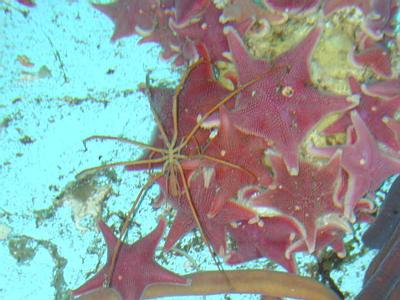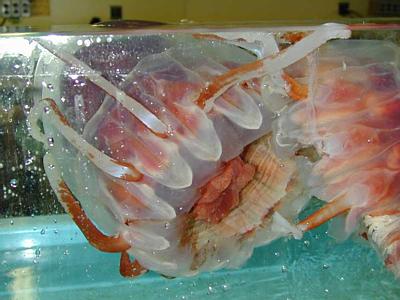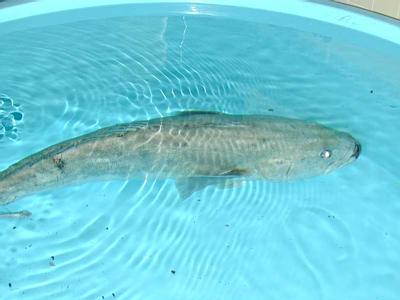15 November, 1999
Science Lecture Series
There are two regular science lectures given at McMurdo Station. One on
Sunday evenings is for general audiences and explains some of the projects
happening on Antarctica and the surrounding ice. The other series is held
on Wednesday evenings and presents highly technical science with supporting
evidence for theories. I attended the presentation given to both series by
Norbert Wu, a marine photographer.
Norbert dives and photographs marine life all over the world. He is
currently here in Antarctica as an artist in residence with his support team
of divers. Peter Brueggeman, Director of the Library at Scripts has
created a great web site with some good research on the marine life. He
dives with Norbert and worked with him during their undergraduate years.
Some of the slides of the ice stalagtights are really interesting. Here is
what happens. As sea ice forms, the ice freezes and "squeezes out" the salt.
As more and more salt gets squeezed out, the water becomes more and more
saline. As such it can absorb more heat. It is also ore dense than the
surrounding water. Small depressions begin to form in the ice and the more
dense saline water flows down. As the more saline water absorbs heat from
the liquid water around it, the liquid freezes forming a tube of ice with
super saline water inside. The tubes "grow" into long projections into the
seawater beneath the ice and form a spectacular scene. TO see what these
look like and to learn more about other Antarctic marine life check out the
web site: www.scilib.ucsd.edu/sio/nsf
I will send along some photos of marine animals that this project collected
for photography purposes. They will be returned after the photography.
There will probably be a TV program special made from the video that was
taken here by Norbert Wu and his diving team. He is also experimenting with
high-density digital photography. He showed some of that film during a
science night lecture. He also showed the very expensive camera that he is
using to document penguin and seal swimming behavior.

sea spiders roam the sea floor near McMurdo Station

This helmet jellyfish is food for anemonies when it gets too close.

This picture is taken of a small holding tank in the aquarium where several experiments are taking place. Look for the star fish, the spiny worm, the sea slugs and other marine life.

I spent some time at the safety refresher school with Dr. Peter Brueggeman You must look at his web site and learn a lot more about the marine life in the antarctic waters. These waters ate -2degrees celcius. Animals must solve the problem of not freezing when their environmentis colder than the freezing point of fresh water. How to they manage? http://www.scilib.ucsd.edu/sio/nsf brouse this site an dlearn the answers to your questions. another site to look at is http://www.mcmurdo.gov/science/projects/fieldguide

Antarctic starfish in a feeding frenzy eating a killed fish This is another situation set up in the Crary lab aquarium for filming. THis is what happens in the Ross Sea, a rather shallow body of water that is ice covered at this time.
Contact the TEA in the field at
.
If you cannot connect through your browser, copy the
TEA's e-mail address in the "To:" line of
your favorite e-mail package.
|
